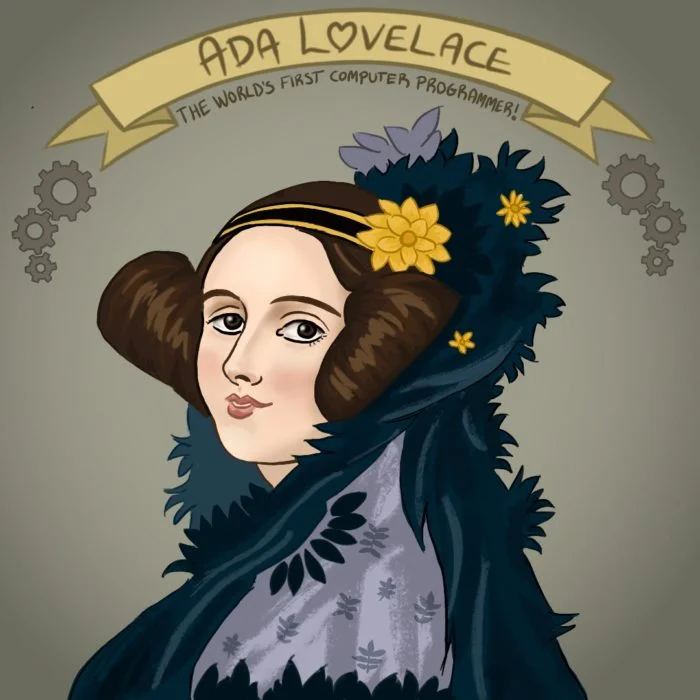My First Job: Why are there so Few Women in Tech?
My first job out of an English Literature degree and I find myself as a woman working in STEM. Careers in Science, Technology, Engineering and Mathematics (STEM) are traditionally, and to this day, reserved for male minds. In my digital agency, I am one of just 11 women - we are an island representing just 15% of employees. Fortunately for me, our office is an inclusive and welcoming place to work, but with just 15% of Computer Science graduates identifying as women, our female cohort shows little sign of impending growth.
But why are STEM positions so rarely filled by people with no Y chromosome?
Is the acronym misread as ‘Seeking Technician, Exclusively Male’?
‘Seriously Though, Extremely Masculine’
Where Tech Began: Who was Ada Lovelace?
Who invented the computer? Bill Gates? Steve Jobs? Benedict Cumberbatch in The Imitation Game? The immense technological achievements of these renowned men all stem from the brilliant mind of an oft overlooked woman: Ada Lovelace.
Ada Lovelace, born 203 years ago today, is often referred to as the world’s first computer programmer. Sure she pre-dated any technology capable of bringing her vision to fruition, but as Sydney Padua puts it: “it is in Lovelace’s notes that can be found the most interesting protoversions of many modern computing ideas.” (p.25)
Ada Lovelace: World’s First Computer Programmer (Picture by Charlotte Ridler)
The daughter of Lord Byron, Ada already had some big footsteps set for her; but her mother was determined otherwise. So the story goes, Lovelace’s mother was so afraid that her daughter would inherit Byron’s manic, romantic and wild poetic tendencies that she banned all creative pursuits. Young Ada was forced to focus her mind on mathematics and was discovered to be an unparalleled genius.
Working alongside Charles Babbage, Ada set to translate his theories for the world. Yet, as she worked through the manuscript, her understanding was unparalleled and her footnotes are said to have been longer than the translated text itself!
“What was certainly Lovelace’s original realisation was to be the essential root of computer science: that by manipulating symbols according the rules, any kind of information, not only numbers, can be operated on by automatic processes.” claims Padua, in his playful comic-strip-cum-biography The Thrilling Adventures of Lovelace and Babbage. (p.26)
How is it that an industry, which essentially owes its origin to a female genius, so often denies female inclusion?
What’s the status of STEM in 2018:
To this day, the number of women working in science, technology, engineering and mathematics is devastatingly low in comparison to their male counterparts.
In 2017, the core STEM workforce was split 23% to 77%, female to male. The good news: this is higher then ever before and trends show that the gap is closing. The not so good news: that means that there are still more than three men to every woman. These ever-advancing industries run the risk of perpetuating a gender imbalance.
“Officially” male students are more likely to either excel or crash and burn when it comes to science and mathematics. So, with a limited number of jobs available, will women remain consistently average and miss out on the chance to shine?
Indeed, in my own office, we women are largely magnetised towards creative, marketing and client services; women deal with people and colouring, leave the coding to the guys.
Women’s and men’s brains are purportedly born with ‘the same creative potential’ - so, according to some researchers, it’s the classic “nature vs nurture” dispute that separates us. If women are taught to see creative lessons as ‘girls subjects’, it’s perhaps inevitable that we will shy away from male-dominated spheres. But, let’s be honest, we can’t avoid EVERY sphere!
What’s next for women in STEM?:
Rifa Thorpe-Tracey, a mentor and diversity champion at Refigure, offers advice to women looking towards a future in a STEM industry:
"My advice is to set a clear vision for where you want to be in all aspects of your life - your work, your personal life, your health and even write it down. Make sure every major decision you take, leads you closer to your goal. Don’t worry how you will get there, part of the process is to make incremental steps towards your goal. If you don’t know where you’re going, where are you going to end up?”
Rifa’s advice, whilst empowering us girls never to give up, also shows just how much of a struggle we still have ahead. Do we really need to have it all figured out? And, more importantly, do men have to go through the same soul searching when they decide to become a computer programmer, scientist or engineer?
Perhaps a more optimistic outlook can be seen in the day that brings women in STEM together: each year, the second Tuesday in October marks a celebration in remembrance of Ada Lovelace, whilst looking to the future of all women working in STEM careers. Remembering Ada reminds us of the sheer power of the female mind; indeed, her’s is a story of the potential that comes from close collaboration between genders, as equals.
I’m glad to see that tributes to Lovelace are on the rise, as the computer scientist is in the running for a prime position on the new £50 note. (How many people will actually see a £50 note and learn her story, I can’t say… but any recognition is a start!)
As I progress in my first ever “proper” job, I am often made aware of my status as a woman working in STEM. Yet, I’m lucky to be treated like another equal member of the team. Perhaps therein lies the simplest answer to the imbalanced industry: support. As a community, we are much more than a single women working in a patriarchal realm; so get together and show STEM no fear.
(Unless of course you’re an unstoppable creative; that’s fine too! I don’t stand with Lovelace’s mother on banning all other pursuits!)
For support, advice and inspiration about a career in STEM as a woman, turn to STEM Women and the community they have gathered.
Title image from University of Southern California.






